Brewing Beer with Vienna Malt
Published: July 20, 2025 at 11:24:50 AM UTC
Last updated: December 12, 2025 at 3:54:46 PM UTC
Using premium ingredients in brewing can significantly enhance the taste and quality of the beer. Château Vienna, a lightly kilned base malt, offers a unique malty richness. It also brings a touch of caramelized sweetness to the brew. This characteristic makes it a top pick for brewers aiming to craft beers with a golden hue and toffee notes. The malty sweetness and body it imparts are highly prized across a broad spectrum of beer styles.
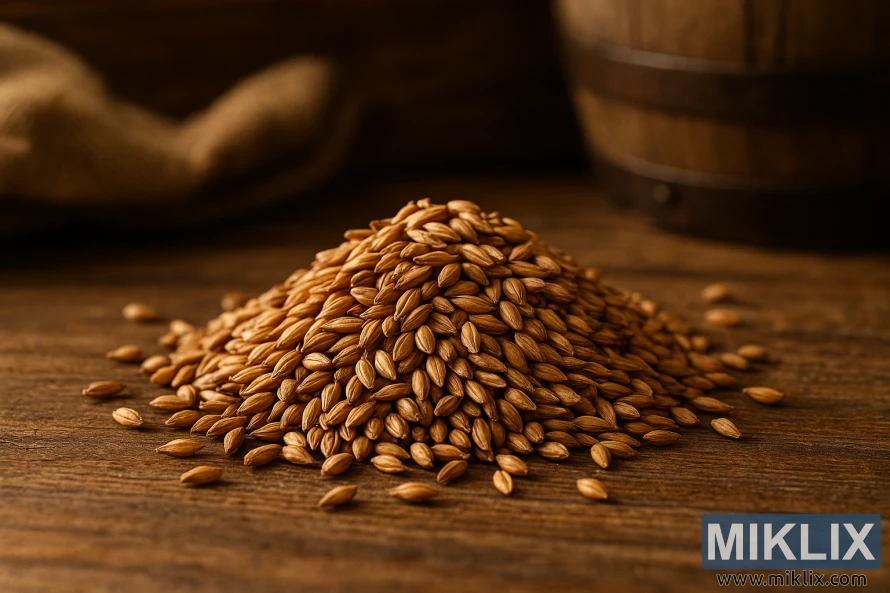
Key Takeaways
- Vienna malt adds a golden color to beer.
- It contributes toffee notes to the beer's flavor profile.
- The malt enhances the beer's malty sweetness and body.
- Château Vienna is a premium, lightly kilned base malt.
- It's suitable for brewing a variety of beer styles.
Understanding Vienna Malt Basics
For brewers aiming to craft beers with distinct malty flavors, grasping the basics of Vienna malt is essential. This type of base malt is key in converting starches into fermentable sugars, thanks to its high enzymatic power.
Vienna malt is celebrated for its rich, malty taste. It's a staple in various beer styles. Its malting process boosts its enzymatic capabilities and flavor.
Characteristics of Vienna malt include its golden hue and toffee notes. These elements contribute a malty sweetness and body to beer. This makes it perfect for brewers seeking balanced flavors in their brews.
Using Vienna malt in brewing offers several advantages:
- Enhanced malty flavor
- Increased body and sweetness
- Improved enzymatic power for starch conversion
By delving into Vienna malt's basics, brewers can unlock its full promise. It's a versatile ingredient, elevating the flavor of both traditional lagers and ales. Vienna malt is a must-have for those aiming to create high-quality beers with unique characteristics.
Characteristics of Quality Vienna Malt
High-quality Vienna malt is a cornerstone in brewing, adding depth and complexity to beers. Its excellence is measured by moisture content, extract, and color. These factors are critical in determining the malt's overall quality.
The moisture level in quality Vienna malt is kept low, not exceeding 4.5%. This is essential for maintaining the malt's integrity and preventing microbial growth during brewing. It ensures the malt remains fresh and effective.
Another key aspect is the extract content, which should be at least 80%. A higher extract content means the malt will produce a wort rich in flavor. This is vital for crafting high-quality beers.
The color of Vienna malt, measured in EBC units, falls between 4.0 and 7.0. This range allows brewers to achieve the perfect color and flavor in their beers. It spans from golden hues to richer, maltier tones.
- Moisture content: max 4.5%
- Extract: min 80%
- Wort color: 4.0-7.0 EBC
For brewers, understanding these characteristics is essential. It helps them choose the best Vienna malt for their recipes. Selecting high-quality Vienna malt ensures their beers meet the highest standards of taste and quality.
Color Contribution in Brewing
Vienna malt is celebrated for its ability to add a rich, golden hue to beer. This quality makes it a favorite among brewers who aim to enhance their beer's visual appeal. The golden color it imparts is a key factor in creating visually stunning beers.
The malting process of Vienna malt is key to its color contribution. It involves precise control over temperature and moisture levels. This careful process ensures that the beer brewed with Vienna malt has a warm, golden color reminiscent of traditional European beers.
Vienna malt not only adds a golden color but also contributes toffee notes and a malty sweetness. These elements enhance the beer's flavor and aroma. By understanding Vienna malt's role in color and flavor, brewers can craft a variety of beer styles that are both visually appealing and flavorful.
- Vienna malt adds a rich, golden color to beer.
- It contributes toffee notes and malty sweetness.
- The malt's color contribution enhances the beer's visual appeal.
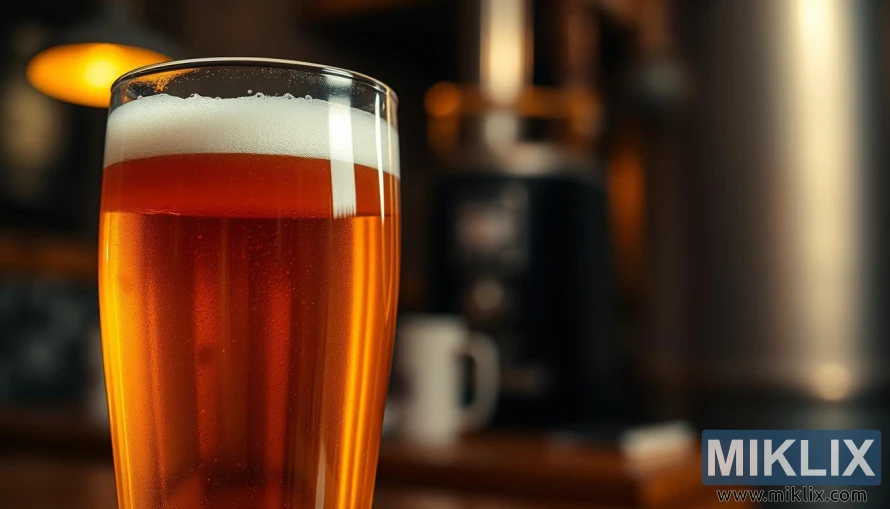
The Unique Flavor Profile of Vienna Malt
The flavor of Vienna malt is smooth, with a malty sweetness and hints of caramel. It's known for enriching beer with a rich, malty taste. This is complemented by subtle notes of toffee and grain.
The malting process, with careful temperature and moisture control, brings out Vienna malt's unique flavor. Its malty sweetness is a key feature. This makes it a favorite among brewers aiming for balanced flavors in their beers.
Using Vienna malt in brewing creates a complex flavor profile. This includes:
- Malty sweetness: Adds depth and warmth to the beer.
- Caramel notes: Provides a subtle sweetness and complexity.
- Hints of toffee and grain: Contribute to the beer's overall character and depth.
Brewers can create a variety of beer styles by understanding Vienna malt's unique flavor. Whether it's used as a base malt or combined with others, it adds richness and complexity. This enhances the beer's overall flavor.
Key benefits of using Vienna malt include:
- A rich, malty flavor that enhances the beer's overall character.
- Subtle caramel notes that add complexity to the flavor profile.
- A smooth, malty sweetness that balances out the beer's flavor.
Mashing Techniques for Vienna Malt
Using Vienna malt in brewing requires the right mashing technique. This malt is prized for its golden hue and toffee flavors, adding a malty sweetness and body to beer. The mashing method significantly influences the beer's final taste and character.
There are two primary mashing techniques: decoction and infusion. Decoction involves boiling a part of the mash and then mixing it back into the main mash to increase the temperature. This technique can deepen the malt's flavor complexity.
Infusion mashing, by contrast, uses a single temperature step or a series of steps by adding hot water to the mash. It's simpler and helps maintain the delicate flavors of Vienna malt.
The choice between decoction and infusion mashing hinges on the brewer's objectives and equipment. Here are some key considerations:
- Flavor Profile: Decoction can enrich the flavor, while infusion preserves the malt's natural sweetness.
- Equipment: Decoction demands more equipment and is more time-consuming.
- Beer Style: The desired beer style often determines the mashing technique. Traditional Märzen styles, for instance, often employ decoction mashing.
Mastering mashing techniques is essential for brewers aiming to optimize Vienna malt use. By selecting the appropriate technique, brewers can craft a variety of beer styles that highlight the malt's unique qualities.
Exploring different mashing techniques can also spark the creation of novel beer recipes. Whether brewing a traditional lager or an experimental ale, Vienna malt's versatility makes it a key ingredient in many styles.
Popular Beer Styles Using Vienna Malt
Vienna lager and Oktoberfest are just a few examples of the many popular beer styles that utilize Vienna malt. This malt is renowned for its ability to add a rich, malty sweetness and a deep golden color to beers.
Vienna lager, a classic Austrian beer style, is characterized by its balanced flavor and smooth, malty character. This is largely attributed to the use of Vienna malt. The malt's contribution to the beer's color and flavor profile makes it an essential ingredient in Vienna lager brewing.
Oktoberfest, a traditional German beer style, also benefits from the use of Vienna malt. The malt's toffee notes and malty sweetness complement the hoppy flavors, creating a well-rounded and complex taste experience.
Some other popular beer styles that use Vienna malt include:
- Märzen
- Bock
- Amber lagers
These beer styles showcase the versatility of Vienna malt and its ability to enhance a variety of brewing traditions. By understanding how Vienna malt contributes to different beer styles, brewers can create authentic and flavorful beers that meet the expectations of beer enthusiasts.
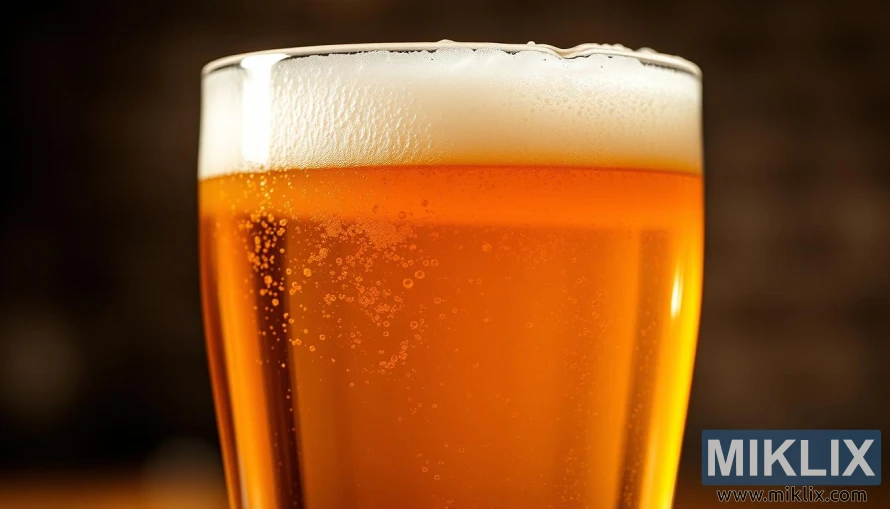
Recipe Formulation Guidelines
The art of brewing with Vienna malt starts with formulating a recipe that highlights its malty sweetness and body. It can serve as a base malt or a specialty malt, making it versatile in recipe formulation.
When crafting a recipe with Vienna malt, the grain bill is key. The ratio of Vienna malt to other grains greatly influences the beer's flavor, color, and body. Using Vienna malt as a base malt adds a rich, malty taste. As a specialty malt, it enhances the beer's complexity.
Hopping is also vital in recipe formulation with Vienna malt. The choice and quantity of hops can either complement or dominate the malt's flavor. A balanced hopping strategy is essential for a harmonious flavor profile.
To brew a well-balanced beer with Vienna malt, brewers should follow these guidelines:
- Use Vienna malt as 50-100% of the grain bill for a robust malty flavor.
- Balance the malt's sweetness with appropriate hopping rates and types.
- Adjust the mashing temperature to optimize the malt's enzymatic activity.
- Consider the beer's style and adjust the recipe to highlight Vienna malt's characteristics.
By understanding and applying these guidelines, brewers can craft a range of beers that showcase Vienna malt's unique qualities. Whether brewing a traditional Märzen or a modern craft lager, Vienna malt can elevate the beer's flavor and quality.
Common Brewing Mistakes with Vienna Malt
To get the most out of Vienna malt, brewers need to know the common pitfalls. This malt is celebrated for its golden hue and toffee flavors. It brings a malty sweetness and body to beer. Yet, it can easily be over- or under-modified, impacting the taste and character.
Over-modification can strip away the malt's natural sweetness and depth. On the other hand, under-modification might make the beer taste too grainy or raw. To sidestep these problems, brewers must pay close attention to their mashing techniques and tweak their methods as needed.
Some common brewing mistakes to watch out for when using Vienna malt include:
- Insufficient mash temperature control, leading to over-modification or under-modification.
- Inadequate lautering techniques, resulting in a loss of valuable malt sugars.
- Incorrect water chemistry, affecting the malt's flavor and character.
By understanding these common mistakes and taking steps to prevent them, brewers can craft high-quality beers. These beers will highlight Vienna malt's unique qualities. Regular monitoring and adjustments to the brewing process are key to achieving the desired outcome.
Pairing Vienna Malt with Other Grains
Vienna malt is a versatile ingredient that pairs well with wheat, rye, and oats. This combination allows brewers to craft complex and flavorful beers. By blending Vienna malt with these grains, brewers can achieve a rich and nuanced flavor profile.
Pairing Vienna malt with wheat adds a refreshing quality to beers. This makes them perfect for summer brews or session beers. The wheat's lighter, crisper character complements the malty sweetness of Vienna malt.
Rye, when combined with Vienna malt, brings a spicy and dry element to beers. This mix is ideal for brewers aiming to create beers with complexity and a dry finish.
- Oats can add a smooth, velvety texture to beers.
- Wheat contributes a lighter, crisper character.
- Rye adds a spicy and dry element.
When pairing Vienna malt with other grains, brewers must consider each grain's characteristics. They should think about how these will interact. Experimenting with different combinations can lead to the creation of unique and captivating beer styles.
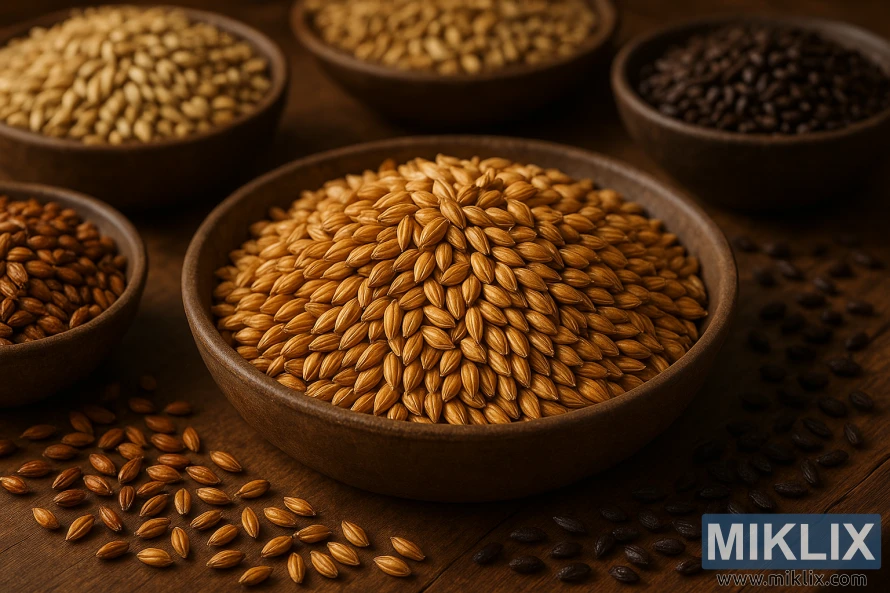
Storage and Handling Best Practices
Proper storage and handling of Vienna malt are key to maintaining its quality and performance in brewing. Brewers must consider moisture control and temperature control to achieve optimal results.
Vienna malt should be stored in a cool, dry place to preserve its quality. It should be kept away from direct sunlight and moisture. The storage area should be well-ventilated to prevent humidity buildup.
- Store Vienna malt in airtight containers to protect it from moisture and pests.
- Keep the storage area at a consistent temperature between 50°F to 70°F (10°C to 21°C).
- Monitor the malt for any signs of spoilage or degradation.
Effective temperature control is also vital. Extreme temperatures can impact the malt's flavor and aroma. A stable storage environment ensures the Vienna malt remains fresh and effective for brewing.
- Check the malt for any visible signs of damage or contamination before storage.
- Use a hygrometer to monitor the moisture levels in the storage area.
- Rotate stock regularly to ensure that older malt is used before it degrades.
By following these storage and handling best practices, brewers can optimize the performance of their Vienna malt. This leads to producing high-quality beers that showcase the malt's unique characteristics.
Commercial Examples of Vienna Malt Beers
Vienna lager and Märzen are prime examples of beers that showcase Vienna malt's unique taste. These brews are celebrated for their malty sweetness, rich texture, and distinct flavors. All these qualities stem from the high-quality Vienna malt used in their production.
Vienna lager, a traditional Austrian beer, exemplifies Vienna malt's role. It boasts a golden hue and toffee notes, thanks to the malt. Märzen, a classic German beer, also employs Vienna malt. This gives it a malty taste and an amber-red color.
These commercial examples highlight Vienna malt's versatility and importance in brewing. By examining these beers, brewers can learn how to use Vienna malt effectively. The success of Vienna lager and Märzen in the market proves Vienna malt's critical role in both traditional and modern brewing.
- Vienna lager showcases the malt's contribution to color and flavor.
- Märzen highlights the malt's role in achieving a rich, malty sweetness.
- Both styles demonstrate the malt's ability to add body and depth to the beer.
Understanding how commercial breweries use Vienna malt can help brewers craft authentic and appealing beers. This knowledge can be applied to their own recipes, ensuring their creations resonate with consumers.
Troubleshooting Vienna Malt Brews
To fully appreciate Vienna malt, brewers must be ready to tackle common problems. This type of malt, celebrated for its golden hue and toffee flavors, can sometimes be over- or under-modified. Such issues can significantly alter the beer's taste and character.
Problems with Vienna malt often stem from inconsistent mash temperatures, improper grain crushing, and subpar lautering methods. These issues can result in off-flavors, reduced extract efficiency, and an unbalanced beer.
Identifying symptoms is the first step in troubleshooting Vienna malt brews. For instance, a beer that's too sweet or has low attenuation might suggest under-modification. In contrast, over-modification can make the beer dry and lacking in body.
To address these problems, brewers should tweak their brewing techniques. For under-modified beers, increasing the mash temperature or extending the mash time can help. For those that are over-modified, reducing the mash temperature or shortening the mash time is advisable.
- Check mash temperature consistency
- Adjust grain crushing to optimal levels
- Improve lautering techniques to enhance extract efficiency
By recognizing common Vienna malt issues and applying the right troubleshooting methods, brewers can refine their process. This leads to the creation of high-quality, flavorful beers.
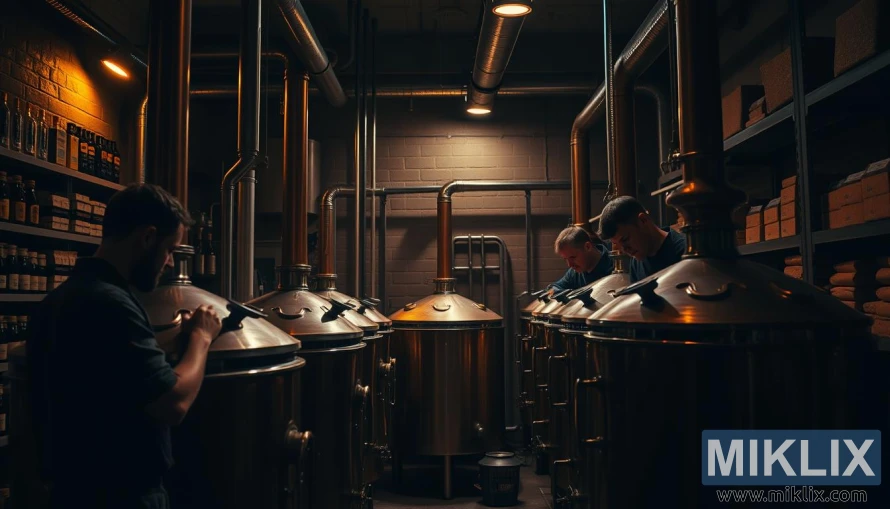
Advanced Brewing Techniques with Vienna Malt
To fully exploit Vienna malt, brewers can use advanced techniques like decoction and step mashing. These methods offer precise control over brewing, leading to beers with rich, complex flavors.
Decoction involves boiling a part of the mash and then mixing it back into the main mash. This process boosts the malt's natural sweetness, enriching the beer's flavor. For Vienna malt, a single decoction step is enough to highlight its toffee notes and malty sweetness.
Step mashing is another advanced technique that works well with Vienna malt. It involves mashing at different temperatures to optimize enzymatic activity and extract more flavors. A step mash with a protein rest followed by a saccharification rest can create a balanced beer with a smooth, malty taste.
Using these advanced techniques can greatly influence the beer's final character. By carefully managing the mashing process, brewers can emphasize Vienna malt's golden color and toffee notes. This helps to minimize any less desirable traits.
- Decoction and step mashing allow for greater control over the brewing process.
- These techniques can enhance the natural flavors of Vienna malt.
- Careful application of these methods can result in beers with complex, balanced flavor profiles.
In conclusion, advanced brewing techniques like decoction and step mashing can significantly improve the quality and complexity of Vienna malt beers. By mastering these techniques, brewers can fully realize the malt's versatility, creating a variety of high-quality brews.
Quality Control and Analysis
To maximize Vienna malt's benefits, brewers must grasp the essence of quality control and analysis. Quality control is a vital step in brewing, as it significantly influences the beer's flavor, aroma, and character.
Monitoring Vienna malt's moisture content is a critical aspect of quality control. A moisture level of max 4.5% is generally advised, as seen in Château Vienna. This ensures the malt stays fresh and maintains its brewing capabilities.
Another essential factor is the malt's extract content, which should be at least 80% for top-tier Vienna malt. The extract content is key to the malt's contribution to the beer's gravity and flavor.
To evaluate Vienna malt quality, brewers should follow these steps:
- Check the malt's moisture content to ensure it's within the recommended range.
- Verify the extract content to confirm it meets the minimum specification.
- Assess the malt's appearance and aroma for any signs of degradation or contamination.
By adhering to these steps and understanding quality control's importance, brewers can enhance their use of Vienna malt. This leads to the creation of high-quality beers that highlight the malt's distinct qualities.
Conclusion
Mastering Vienna malt is key to brewing high-quality beers. It brings a golden color and toffee notes, adding a malty sweetness and body. Understanding its basics, characteristics, and pairing with other grains is essential. This way, brewers can craft authentic, flavorful, and complex beers.
To elevate your brewing, focus on quality control and analysis. Be ready to tackle common issues with Vienna malt. As you experiment and hone your skills, you'll master Vienna malt. This will lead to exceptional beers that highlight its unique qualities.
For future endeavors, explore advanced brewing techniques. Try different mashing methods or blend Vienna malt with specialty malts for unique flavors. This approach will allow you to innovate with Vienna malt, creating truly exceptional beers.
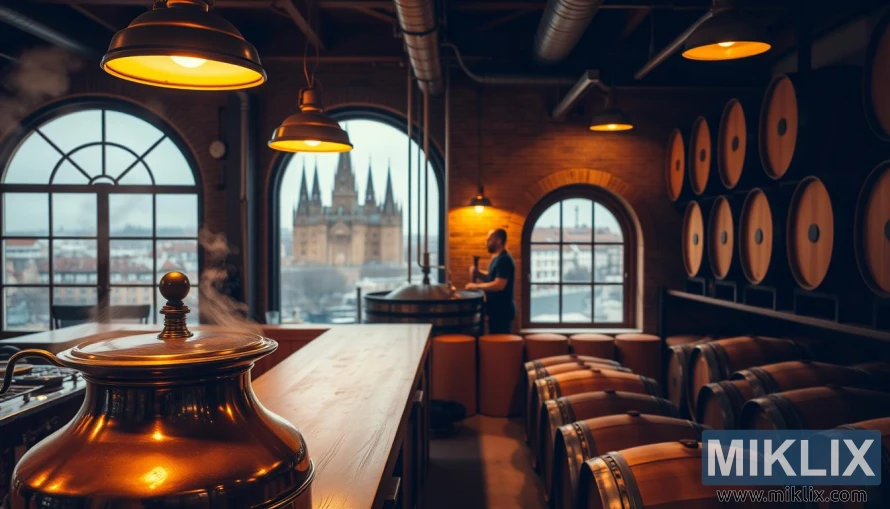
Further Reading
If you enjoyed this post, you may also like these suggestions:
